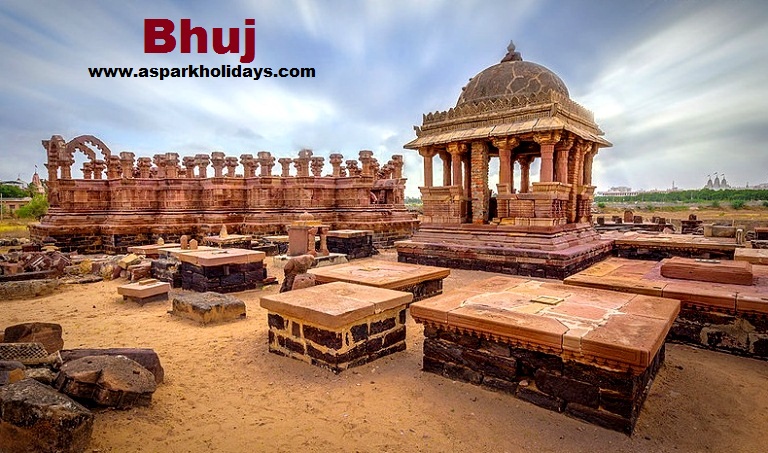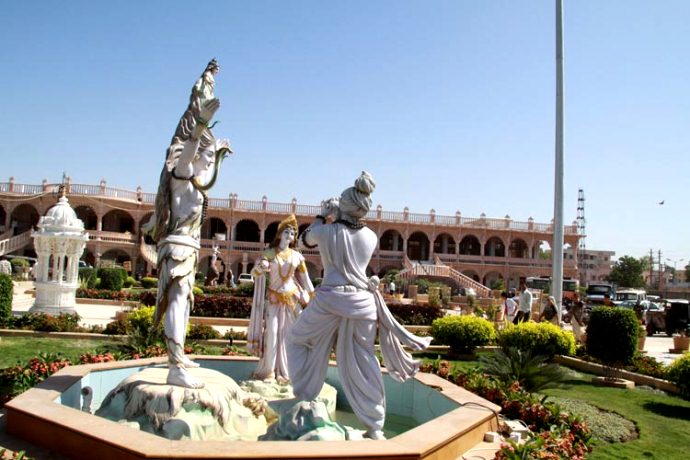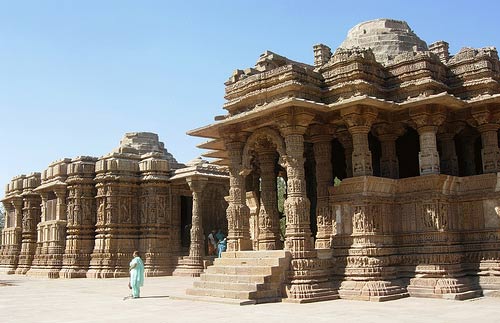
This place is a paradise of handicrafts and lifestyle lovers. There are some villages in Bhuj which are rich in craft and culture. The houses in these villages are decorated both from the outside and inside with linear reliefs made of mud and mirrors. Embroidery is the most important handicraft in this region.
History of Bhuj- Bhuj was the capital of the former princely state of Kutch till 1947 AD. The Rajput rulers of Kutch came from Sindh or northern India in the late 15th century and settled at Bhuj. Rao Khengarji I chose the strategic location at the base of Bhujiyo Dungar and founded the city of Bhuj in 1548 AD. The rulers of Kutch got exempted from paying tribute to the Mughal rulers in return for free passage to the Mecca pilgrims. The need for better security arose only after the decline of Mughal power. In 1723 AD, Rao Godiji constructed the massive fort with gates and bastions (11 meter thick masonary wall), surrounding the whole town. The city wall was also armed with fifty one guns. The British took over the fort in 1819 AD and acted as peacemaker between the Kutch rulers and Bhayad Jagirdars. The treaty with the British resulted in peaceful period in the history of Kutch and the state thus became prosperous with surplus funds, enabling the rulers to undertake public and royal building projects. Rao Pragmalji, who ruled Kutch from 1860 to 1876 AD also undertook various projects like the improvement of Mandvi harbour, construction of roads and irrigation works, hospitals, schools and a jail. Rao Pragmalji constructed the Prag Mahal and Ranjit Vilas Palace at Bhuj and Vijay Vilas Palace at Mandvi.
Tourist Attractions in Bhuj- The main tourist attractions in Bhuj are the Aina Mahal, Prag Mahal and Cenotaph Complex. Aina Mahal was constructed by Rao Lakhpatji in 1750 AD. Aina Mahal is a unique example of an Indian palace built in the mid-eighteenth century with European influence. The Kutch Museum, formerly known as the Fergusson Museum, was established by the Maharao Khengarji III in 1877 AD. It is the oldest museum in Gujarat. This museum is constructed in the Italian style, and located in the picturesque surroundings on the banks of Hamirsar Lake. The museum has a large collection of Kshatrapa inscriptions, various archaeological objects, arms and specimens of various crafts of the Kutch region.
How to Reach Bhuj
By Air- The nearest airport is located at Ahmedabad. Various domestic airlines are available which connect Ahmedabad and Mumbai.
By Rail- Some trains operate between Bhuj and Ahmedabad on meter guage line and Mumbai (Bombay) on the broad guage line from Gandhidham.
By Road- Bhuj is connected to some of the various cities of Gujarat. Bhuj is connected by State highway upto Bhachau to Ahmedabad by national hig
Need Aspark Help?
For Tour Packages, Vehicle Rental and Customer Care Support.
+91 9999 31 7846
booking@asparkholidays.comWhy Travel with Us?

Excellent Support
Our Team Available 24x7 for Customer support
Best Price & Savings
We Offer the Most Competitive Prices.


